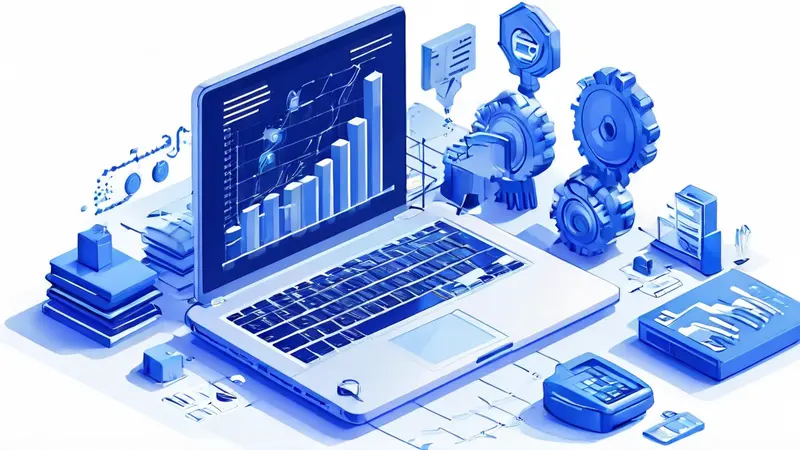
R&D EXPENDITURE MEASURES: HOW TO WRITE?
When it comes to writing about Research and Development (R&D) expenditure measures, there are several key points to consider. Firstly, understand the concept of R&D and its significance in business growth. Secondly, analyze the types of R&D expenses and their implications. Lastly, elaborate on how to measure and account for these expenses in financial statements. In this article, we will delve into each of these aspects, providing you with comprehensive guidance on how to write about R&D expenditure measures.
一、UNDERSTANDING THE CONCEPT OF R&D AND ITS SIGNIFICANCE IN BUSINESS GROWTH
Research and Development (R&D) is an essential component of business innovation and growth. It involves activities that companies undertake to innovate and introduce new products or services. It's often the first stage in the development process. The goal is typically to take new products and services to market and add to the company's bottom line.
R&D plays a significant role in the success and longevity of businesses in today's competitive market. It allows companies to stay ahead of their competition by developing new products or improving existing ones. It also enables businesses to increase their market share, improve profitability, and achieve sustAInable growth.
二、ANALYZING THE TYPES OF R&D EXPENSES AND THEIR IMPLICATIONS
R&D expenses are the costs that a company incurs for activities related to its research and development efforts. These include:
-
Salaries and Benefits: These are the costs associated with employing the staff involved in R&D activities. This could include scientists, engineers, researchers, and other supporting staff.
-
Materials and Supplies: Any materials or supplies used in the R&D process, such as lab equipment or software, are part of R&D expenses.
-
Contract Research Expenses: If a company hires an external organization to conduct certain aspects of its R&D activities, the fees paid to that organization are considered R&D expenses.
-
Depreciation and Amortization of R&D Equipment and Facilities: As with any physical assets, R&D equipment and facilities also depreciate over time. This depreciation is also considered an R&D expense.
The implications of these expenses on a company's financial performance are significant. They can impact the company's profit margins, earnings per share, and overall financial health. However, they are also an investment in the company's future growth and success.
三、MEASURING AND ACCOUNTING FOR R&D EXPENSES IN FINANCIAL STATEMENTS
Measuring and accounting for R&D expenses is crucial for companies to accurately assess their financial performance and make informed business decisions. The process typically involves the following steps:
-
Identification of R&D Activities: The first step is to identify all activities that qualify as R&D. This could include product development, process improvement, software development, and more.
-
Allocation of Costs: Once the R&D activities have been identified, the next step is to allocate the associated costs. This involves assigning the costs to the specific activities to which they relate.
-
Recording of R&D Expenses: After the costs have been allocated, they are recorded as expenses in the company's income statement. This is done in accordance with the accounting principles and standards applicable in the company's jurisdiction.
-
Analysis and Reporting: The final step is to analyze the recorded R&D expenses and report them to the relevant stakeholders. This could include the company's management, investors, and regulatory authorities.
In conclusion, writing about R&D expenditure measures involves a deep understanding of the concept of R&D, an analysis of the types of R&D expenses, and a comprehensive knowledge of how to measure and account for these expenses. It requires a blend of technical knowledge, analytical skills, and financial acumen.
相关问答FAQs:
1. 为什么研发费投入措施对企业发展至关重要?
研发费投入措施对企业发展至关重要,因为它能够促进创新和技术进步,提高企业的竞争力。通过投入资金、人力和资源,企业能够开展研发活动,开发出新产品、新技术,不断满足市场需求并推动行业的发展。
2. 研发费投入措施如何制定和执行?
制定和执行研发费投入措施需要考虑多个方面。首先,企业需要明确研发目标和战略,确定投入的重点领域和关键项目。其次,需要建立科学的预算制度,合理安排研发费用的使用。同时,企业还应该建立有效的研发团队,提供必要的培训和资源支持,确保研发活动的顺利进行。最后,企业需要建立评估和监控机制,及时调整和优化研发费投入措施,确保投入的有效性和可持续性。
3. 研发费投入措施如何评估其效果和回报?
评估研发费投入措施的效果和回报可以采取多种方法。一种常用的方法是通过研发项目的成果和产出来评估。例如,可以评估新产品的销售额、市场占有率的增长,以及技术创新的贡献程度等。另外,还可以考虑研发投入对企业绩效的影响,如利润增长、企业价值的提升等。此外,还可以进行市场调研和竞争分析,了解研发投入对企业在市场上的竞争力和地位的影响。通过综合评估和分析,可以更好地了解研发费投入措施的效果和回报,并对未来的研发投入做出合理的决策。





























